Robustness and accuracy of feature-based single image 2-D-3-D registration without correspondences for image-guided intervention
- PMID: 23955696
- PMCID: PMC4479265
- DOI: 10.1109/TBME.2013.2278619
Robustness and accuracy of feature-based single image 2-D-3-D registration without correspondences for image-guided intervention
Abstract
2-D-to-3-D registration is critical and fundamental in image-guided interventions. It could be achieved from single image using paired point correspondences between the object and the image. The common assumption that such correspondences can readily be established does not necessarily hold for image guided interventions. Intraoperative image clutter and an imperfect feature extraction method may introduce false detection and, due to the physics of X-ray imaging, the 2-D image point features may be indistinguishable from each other and/or obscured by anatomy causing false detection of the point features. These create difficulties in establishing correspondences between image features and 3-D data points. In this paper, we propose an accurate, robust, and fast method to accomplish 2-D-3-D registration using a single image without the need for establishing paired correspondences in the presence of false detection. We formulate 2-D-3-D registration as a maximum likelihood estimation problem, which is then solved by coupling expectation maximization with particle swarm optimization. The proposed method was evaluated in a phantom and a cadaver study. In the phantom study, it achieved subdegree rotation errors and submillimeter in-plane ( X- Y plane) translation errors. In both studies, it outperformed the state-of-the-art methods that do not use paired correspondences and achieved the same accuracy as a state-of-the-art global optimal method that uses correct paired correspondences.
Figures


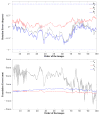

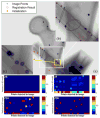
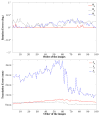
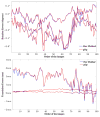
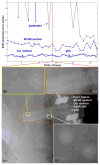
References
-
- Cleary K, Peters TM. Image-guided interventions: Technology review and clinical applications. Annu Rev Biomed Eng. 2010;12(1):119–142. - PubMed
-
- Markelj P, Tomazěvič D, Likar B, Pernuš F. A review of 3D/2D registration methods for image-guided interventions. Med Image Anal. 2012;16(3):642–661. [Online] Available: http://www.sciencedirect.com/science/article/pii/S1361841510000368. - PubMed
-
- Gueziec A, Kazanzides P, Williamson B, Taylor R. Anatomy-based registration of CT-scan and intraoperative X-ray images for guiding a surgical robot. IEEE Trans Med Imag. 1998 Oct;17(5):715–728. - PubMed
-
- Fleute M, Lavallée S. Nonrigid 3-D/2-D registration of images using statistical models. In: Taylor ACC, editor. Medical Image Computing and Computer-Assisted Intervention—MICCAI’99. Berlin, Germany: Springer-Verlag; 1999. pp. 138–147. vol. LNCS 1679.
-
- Feldmar J, Ayache N, Betting F. 3D-2D projective registration of free-form curves and surfaces. Comput Vis Image Understand. 1997;65(3):403–424.
Publication types
MeSH terms
Grants and funding
LinkOut - more resources
Full Text Sources
Other Literature Sources

